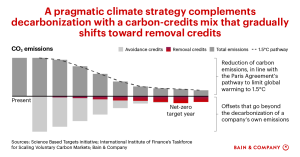Should I Buy Carbon Credit Exchanges?
Buy Carbon Credit Exchanges
If you’re concerned about the world’s climate, a carbon credit exchange is one way to support global efforts to reduce greenhouse gas emissions. These marketplaces match carbon credit sellers with buyers who need to offset their own emissions. Each carbon credit is equal to a ton of CO2e and can be purchased from a variety of projects, including reforestation and wind farms.
The carbon credit exchange market grew out of the need to create a financial incentive for companies to find ways to cut their emissions. In a typical “cap-and-trade” program, governments assign maximum emission limits to companies and allow them to trade in “permits” that decline over time. Companies that exceed their limit can buy credits from a project that has already reduced its emissions, or they can sell the excess to another company.

As the world continues to address climate change, there’s been an uptick in demand for these certificates. The global market for these carbon credits is worth more than $2 trillion and is expected to double over the next decade. But today’s voluntary carbon markets (VCM) are plagued by low liquidity, transactional friction, and a lack of transparency around credit quality and diversity.
Should I Buy Carbon Credit Exchanges?
A number of blockchain-backed ventures are aiming to improve these problems. They’re introducing new uses for crypto and creating digital tokens to make it easier to access, trade, and store carbon credits. In addition, they’re redesigning the way these assets are represented, putting “integrity” before liquidity.
While many of these new ventures are promising, they’re still in early stages and need a lot of investor capital to scale. Some of these token-forward ventures are rethinking the way they represent carbon credits, shifting from fungible tokens that represent a claim on a unique piece of art to non-fungible tokens (NFTs) that represent a share in a pool. The latter are better suited to the carbon market, which often requires large investments in projects that can generate credits over a long period of time.
However, NFTs have some drawbacks when applied to carbon credit markets. Unlike cryptocurrencies like Bitcoin, NFTs can’t be mined, which makes them less attractive to investors. NFTs also have a higher risk of being hacked or stolen and can have a negative impact on liquidity.
A more promising alternative to NFTs for carbon credits would be to adopt a common set of standards, called core carbon principles, and a taxonomy that defines additional attributes used to classify credits (such as project type). The establishment of these quality thresholds could help ensure that carbon credits adhere to the highest level of environmental and market integrity. A standardized set of attributes would also help to simplify the matching of buyers and suppliers, which is currently a time-consuming and inefficient process carried out over the counter. The development of such a system will require cooperation among the different players in the carbon market, from regulators to project developers and brokers. But the benefits of doing so could be enormous.